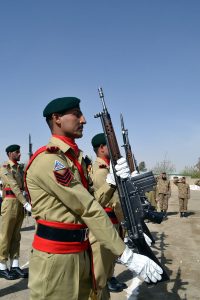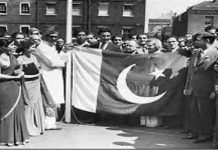
Peshawar: Some 2763 terrorists have been killed in operation Zarbe-e-Azab against militants after a year of its launch in June 2014, says Inter-services Public Relations (ISPR), the public relations arm of Pakistan military.
The operation that displaced nearly a million people was launched in North Waziristan believed to be a safe haven for militants carrying out terrorist activities in the region, including Pakistan.
“One year since start [of operation], significant achievements in FATA [have been made] especially in North Waziristan and Khyber Agency,” Director General ISPR Major General Asim Saleem Bajwa posted on the micro-blogging sit Twitter. “[Militant] strongholds, communications infrastructure,[and] sanctuaries largely cleared.”
Pakistan is a frontline ally of United States (US) against terrorism for the last many years. According to South Asian Terrorism Portal (SATP), a Delhi based online resource for information, data, critical assessment and analysis on terrorism in South Asia., more than 26000 civilians and security personnel fatalities were reported in different terror attacks across Pakistan since 2003.
Peshawar, the capital of the restless province of Khyber Pakhtunkhwa, witnessed the massacre of school children in December 2014 when a military-run school was attacked by Taliban that left 149 killed, of which 134 were children.
Sharing details on achievements during one year of operation Zarb-e-Azab (ZeA), military spokesperson Asim Bajwa said on his official twitter feed that so far 9000 intelligence based operations had apprehended thousand of “terrorists” and their abettors.
“218 hardcore terrorists were killed in cities [while] 347 [army] officers and soldiers embraced Shahadat [martyrdom]” in operation,” Bajwa said.
ISPR added that 837 hideouts were destroyed and 253 tons of explosives have been recovered.
SATP statistics about fatalities due to terrorism across the country also showed improvement in country’s security situation. It shows that the 1522 civilians and 439 security personnel have been killed since June 2014 till 14th of June 2015, registering a decrease in the number of fatalities in corresponding period of 2013-14 which were 2252 civilians and 603 security personnel.
Statistics compiled from different newspapers by the website further state that 1299 terrorists were killed between the period of June 2013 to June 2014 while the number has increased to 3863 between June 2014 to 14th of June 2015.
While unveiling details of the operation ZeA in North Waziristan Agency, Bajwa said that 1808 weapons including heavy and light machine guns, sniper rifles, rocket launcher, AK-57s were seized from terrorist hideouts.
The ISPR figures about terrorists killed in ZeA and claims that the area has been cleared of security forces were not confirmed from independent sources. According to independent security analyst Raza Rumi the region where operations were/are underway remains “no-go area” for local media. However Rumi termed ZeA as the defining moment for Pakistan.
“The major problem with the results [of ZeA] is that it remains a no-go area for local media and therefore the outcomes cannot be fully verified,” Rumi told News Lens Pakistan.
He said much of North Waziristan had been cleared and Tehreek-e-Taliban was on the defensive that, “led to the undoing of transnational terror networks that were operating there for many years.”
Rumi said operations against militants required policing and intelligence coordination through civilian platforms such as National Counter Terrorism Authority (Nacta) that remains underfunded and weak.
Defense analyst Brigadier(r) Saad Mohammad said the country had witnessed the attack on Peshawar school, sectarian violence in Quetta and attack on the Ismailis in Karachi amid operation ZeA.
“That is a clear message for us that they [militants] still have the potential to carry out big terror attacks wherever they want,” said Mohammad.
For the time being though, he dubbed the operation a success: “Yes, the country has came out of the restless situation before the operation and we can call it success of the government for the time being, achieved through security forces and the region has been cleared of militants. But the administration of North Waziristan has still to be handed over to civilian authorities.”
He pointed out that the “hardcore foot soldiers” of militants were based in places like urban Punjab and the government would need to focus on cities to curb terrorism.
Mohammad said that Pakistan military had twice conveyed to the government the need to carry out operations against militants in urban areas. He said he was still not sure that the government was serious to tackle militancy in urban areas nor was he satisfied with the implementation of National Action Plan against terrorism.
He recalled the situation of Swat operation saying six years had passed since the military operation in the valley but the civilian government still couldn’t administer the region without security forces. “It is the same situation with ZeA in North Waziristan.”
Bajwa vowed that the offensive to purge terrorism from the region will continue for a terror-free Pakistan. He outlined some of the positive impacts witnessed in the wake of the operation in North Waziristan such as the improved security environment in the country.
“China’s president and other dignitaries’ visits, Pakistan-Zimbabwe cricket series and China-Pakistan Economic Corridor are examples of improved environment in the country,” he said. “The whole nation came together to totally eliminate terrorism from Pakistan. The media and civil society played a positive role to help end the menace.”



